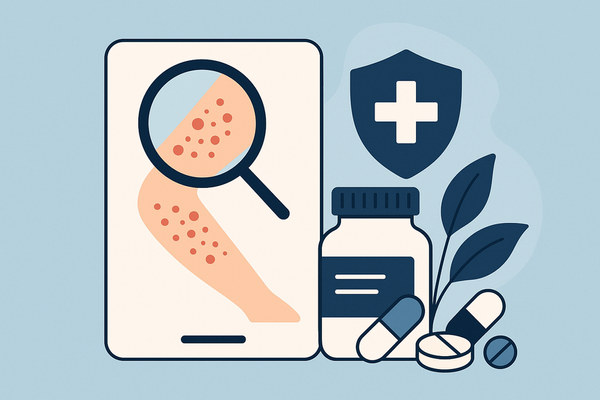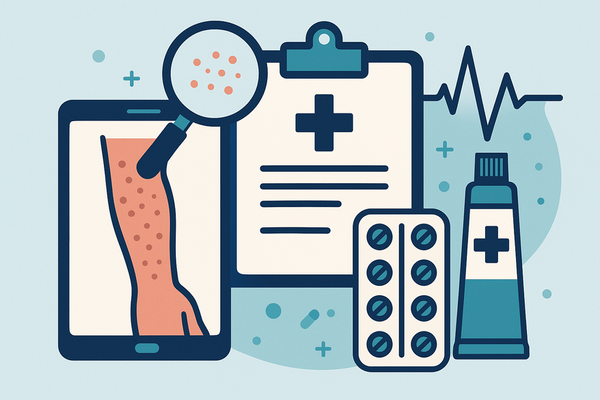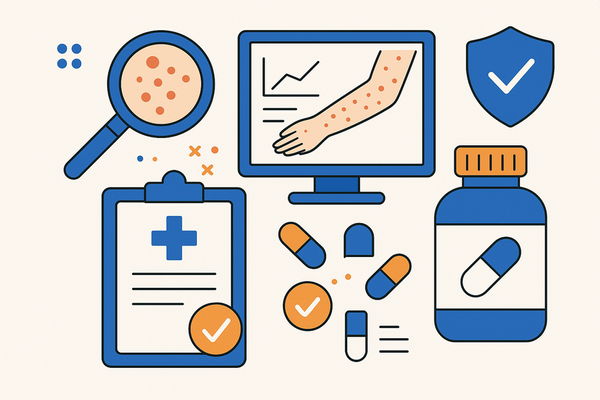FDA Approval for Rash Detection Apps: Navigating AI Dermatology Regulations and Legal Implications
Discover how FDA approval for rash detection apps establishes trust, safety, and adoption. Explore AI dermatology tools regulations and legal implications.
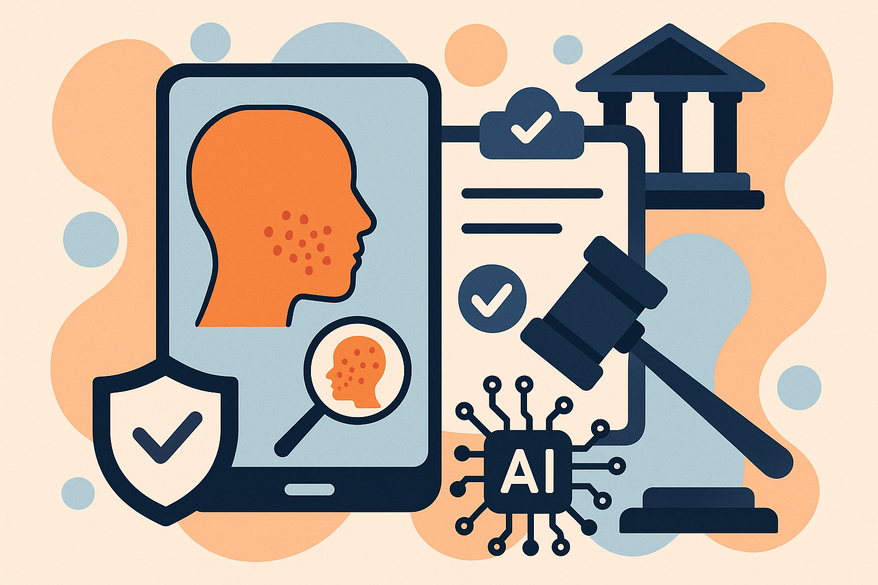
Estimated reading time: 8 minutes
Key Takeaways
- Regulatory Milestone: FDA clearance is crucial for clinical adoption of AI rash detection apps.
- Risk Classification: Apps fall into Class I–III, with 510(k) for moderate-risk and PMA for high-risk tools.
- Global Standards: U.S. SaMD guidelines and EU MDR/GDPR frameworks shape safety and data protection.
- Legal Landscape: Liability, privacy, and informed consent protocols are key for AI skin diagnosis.
- Collaborative Path Forward: Developers, clinicians, and regulators must share data and iterate on guidelines.
Table of Contents
- Section 1: Overview of AI in Dermatology
- Section 2: FDA Approval for Rash Detection Apps
- Section 3: Regulations for AI Dermatology Tools
- Section 4: Legal Implications of AI Skin Diagnosis
- Section 5: Integration and Impact
- Section 6: Conclusion
Section 1: Overview of AI in Dermatology
Keyword: regulations for AI dermatology tools
AI dermatology tools are software applications and devices that use machine‐learning and deep‐learning algorithms trained on large, annotated skin‐image datasets to identify, classify, or recommend management for skin conditions.
Core benefits of AI dermatology tools:
- Faster, more accessible screening
• AI models detect conditions like melanoma, psoriasis, and atopic dermatitis in seconds.
• Real-world use case: Primary care clinics using AI to flag suspicious lesions before referral. - Decision-support for clinicians
• Teledermatology services augment remote diagnosis with AI-suggested differential lists.
• Studies show reduced missed or late melanoma diagnoses in primary care settings. - Patient empowerment
• At-home monitoring apps let users track rash progression via smartphone cameras (track rash progress pictures).
• Push notifications remind users to retake images and report changes.
These advantages improve patient outcomes by enabling early detection, reducing healthcare bottlenecks, and streamlining referrals. Strong regulations for AI dermatology tools ensure that these benefits come with reliable performance and patient safety.
Source: https://www.targetedonc.com/view/fda-approves-first-ai-powered-skin-cancer-diagnostic-tool
Section 2: FDA Approval for Rash Detection Apps
Keyword: FDA approval for rash detection apps
The FDA classifies medical devices and software into three classes (I–III). AI-powered rash detection apps typically follow these steps for 510(k) clearance or PMA (premarket approval):
- Device Classification
- Class I: Low-risk tools (e.g., simple wellness apps).
- Class II: Moderate-risk devices needing 510(k) clearance.
- Class III: High-risk tools (e.g., apps diagnosing malignant conditions) → require PMA. - 510(k) vs. PMA Pathway
- 510(k): Demonstrate “substantial equivalence” to an existing cleared device.
- PMA: Extensive clinical trials proving safety and effectiveness. - Clinical Validation Studies
- Sensitivity: Ability to correctly identify positive cases (true positives).
- Specificity: Ability to correctly identify negative cases (true negatives).
- FDA recommends multi‐center trials across diverse populations. - Algorithmic Bias Evaluation
- Must test performance across all skin tones (Fitzpatrick I–VI).
- FDA guidance emphasizes identifying and mitigating racial or ethnic biases. - User Interface & Data Protection
- Clear instructions for image capture.
- Data encryption and secure cloud storage.
- Compliance with HIPAA for U.S. patient data.
Case Study: DermaSensor
Noninvasive, AI-driven handheld device for skin cancer detection. Achieved 96% sensitivity in detecting basal cell carcinoma, squamous cell carcinoma, and melanoma. Negative predictive value of 97% for benign lesions. Clinician feedback: Improved confidence in point‐of‐care triage, reduced unnecessary biopsies.
Source: https://www.targetedonc.com/view/fda-approves-first-ai-powered-skin-cancer-diagnostic-tool
Market Gap
No consumer-facing rash detection apps have yet received FDA approval. Many apps available on app stores lack rigorous clinical validation (AI Rash Detector App: Compare Top Photo Rash Diagnosis and Software). This gap highlights an opportunity for developers to secure regulatory clearance and build clinician trust.
Source: https://www.aad.org/public/fad/digital-health/apps
Section 3: Regulations for AI Dermatology Tools
Keyword: regulations for AI dermatology tools
Mapping the U.S. Regulatory Framework
- The Federal Food, Drug, and Cosmetic Act classifies diagnostic apps as medical devices.
- The FDA’s Center for Devices and Radiological Health (CDRH) oversees software as a medical device (SaMD).
- AI/ML Action Plan (2021):
• Pilot programs for pre-certification of software developers.
• Adaptive regulatory pathways for continuous learning algorithms.
• Goal: modernize processes by 2025 to handle frequent software updates.
Source: https://www.dermatologytimes.com/view/fda-launches-agency-wide-ai-rollout-by-2025
EU Medical Device Regulation (MDR)
- Classifies AI dermatology tools under Class IIa–III depending on risk.
- Emphasis on post-market surveillance: manufacturers must report real-world performance data.
- GDPR data protection:
• Strict rules for user consent, data minimization, and the right to erasure.
• Requires Data Protection Impact Assessments (DPIAs) for high-risk processing.
Risks of Inadequate Regulation
- Consumer skin apps missing up to 41% of melanomas.
- Misdiagnosis rates nearly 70% for common rashes.
- Potential harm: delayed treatment, false reassurance, unnecessary anxiety.
Source: https://www.aad.org/public/fad/digital-health/apps
Section 4: Legal Implications of AI Skin Diagnosis
Keyword: legal implications of AI skin diagnosis
- Liability Considerations
- Developer Negligence: flawed algorithms or lack of validation.
- Clinician Reliance: over‐dependence on app output without clinical judgment.
- Scenarios:
• False negative: missed melanoma → malpractice claim against provider.
• False positive: unneeded biopsy → patient harm and legal action. - Data Privacy Obligations
- HIPAA (U.S.):
• Apps handling PHI must ensure encryption at rest and transit.
• Business Associate Agreements (BAAs) for third-party developers.
- GDPR (EU):
• Explicit user consent for data collection and processing.
• Data minimization: only gather necessary images and metadata.
• Right to be forgotten: apps must delete user data on request.
(Navigating Privacy Concerns with AI Rash Diagnosis) - Informed Consent Protocols
- Transparent user agreements: plain‐language summaries of data use.
- Standardized disclaimers: app is not a substitute for professional diagnosis.
- User education: explain sensitivity/specificity and potential for error.
Section 5: Integration and Impact
Keywords: FDA approval for rash detection apps; regulations for AI dermatology tools; legal implications of AI skin diagnosis
How these elements converge:
- FDA approval for rash detection apps builds clinician confidence.
- Regulations for AI dermatology tools set global standards for safety, effectiveness, and data protection.
- Legal implications of AI skin diagnosis clarify liability and privacy, driving ethical implementation.
The virtuous cycle:
- Regulatory endorsement (FDA clearance)
- Higher adoption in clinics and teledermatology
- Real-world data collection informs post‐market surveillance
- Improved algorithms and updated regulations
- Reinforced user trust and legal clarity
- Continuous innovation in digital dermatology
Calls to collaborate:
- Developers should share de-identified performance data with regulators.
- Clinicians can provide feedback on usability and outcomes.
- Regulators must engage stakeholders in iterative guideline updates.
Sources:
https://www.dermatologytimes.com/view/fda-launches-agency-wide-ai-rollout-by-2025
https://www.aad.org/public/fad/digital-health/apps
Section 6: Conclusion
Keywords: FDA approval for rash detection apps; regulations for AI dermatology tools; legal implications of AI skin diagnosis
Recap
- FDA approval for rash detection apps is pivotal for clinical credibility, patient safety, and adoption.
- Robust regulations for AI dermatology tools ensure consistent performance and protect diverse populations.
- Careful navigation of legal implications of AI skin diagnosis addresses liability and data privacy.
Actionable Recommendations
- Developers:
- Prioritize diverse clinical validation trials.
- Implement bias detection and mitigation in algorithms.
- Design transparent user interfaces with clear disclaimers.
- Healthcare Providers:
- Adopt only FDA-approved or cleared apps.
- Educate patients on app capabilities and limitations.
- Report real-world performance and user feedback.
- Regulators:
- Update guidelines for adaptive AI algorithms continuously.
- Support pilot pre-certification programs for trusted developers.
- Encourage open data sharing for post-market surveillance.
Forward-Looking Statement
By aligning regulatory rigor and legal safeguards, we can unlock AI’s full potential in dermatology. Safe, effective, and trustworthy rash detection apps will transform skin care—improving early diagnosis, reducing healthcare costs, and empowering patients worldwide.
Spotlight on a Real App
For example, Rash Detector (Skin Rash App) offers instant AI analysis via a simple photo upload. Below is a sample report demonstrating how AI confidence scores and risk assessments are presented:
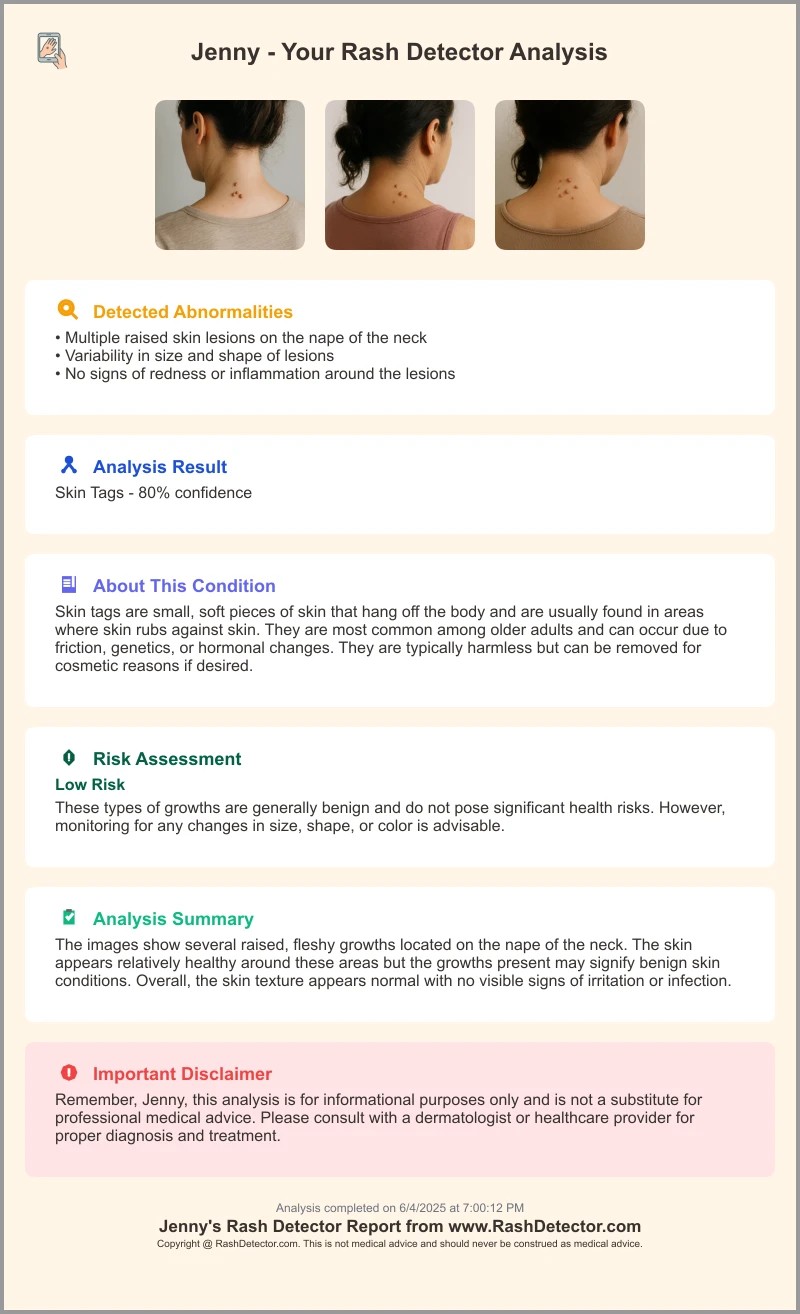
FAQ
- What qualifies an app for FDA 510(k) clearance versus PMA?
An app demonstrating substantial equivalence to a legally marketed device can follow the 510(k) pathway, while novel high-risk diagnostic apps require a PMA backed by clinical trials. - How can developers mitigate algorithmic bias?
By testing AI performance across diverse skin tones (Fitzpatrick I–VI), incorporating fairness metrics, and regularly updating training datasets. - What legal safeguards protect patient data?
In the U.S., HIPAA mandates encryption and BAAs for apps handling PHI. In the EU, GDPR requires explicit consent, data minimization, and the right to erasure. - Does FDA clearance guarantee clinical adoption?
While FDA clearance builds trust, apps must also demonstrate real-world effectiveness, integrate into clinical workflows, and address user education.


